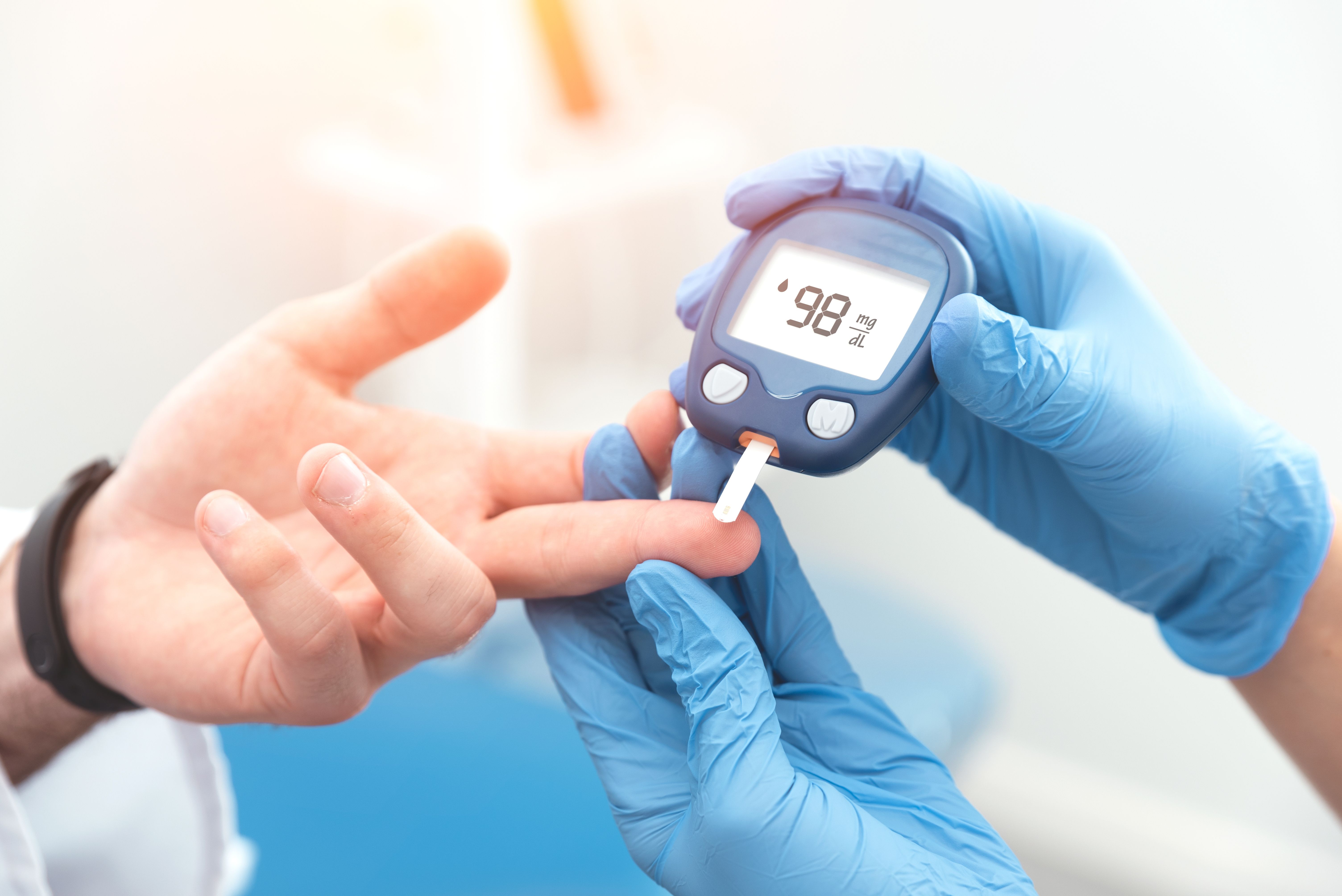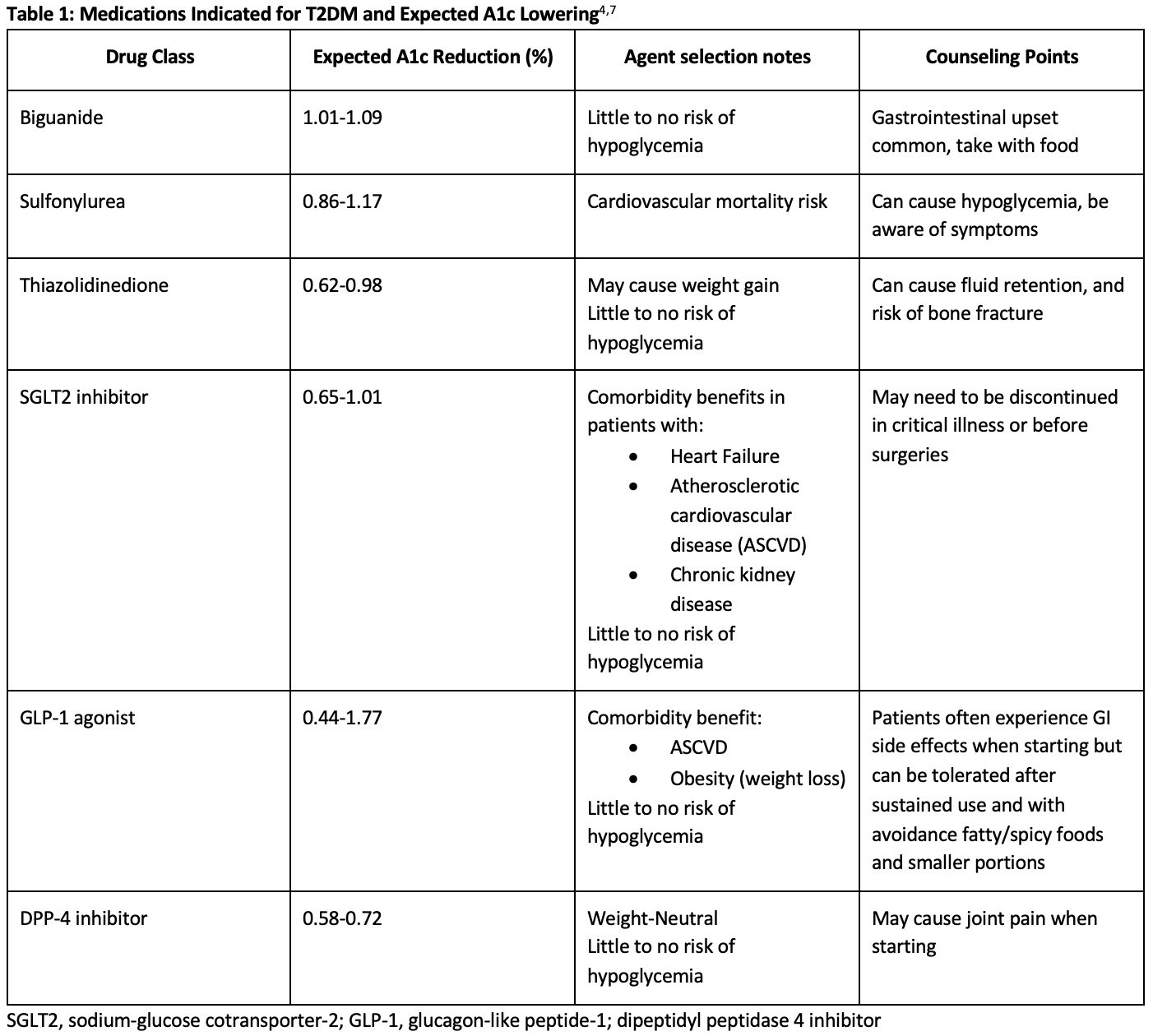The Importance of Hemoglobin A1c Management in Type 2 Diabetes
Pharmacists can help to interpret HbA1c and glucose results when patients come to pick up medications and contact prescribers and/or make recommendations based off patient results.
Introduction
In the US, nearly 1 in 10 individuals have diabetes.1 Each year, the American Diabetes Association (ADA) publishes the Standards of Care in Diabetes which provide evidence-based guidance and updates for the comprehensive management of diabetes. The most recent ADA guidelines define a diagnosis of diabetes as a hemoglobin A1c (HbA1c) reading of ≥6.5%.2 Specific glycemic goals often include an HbA1c goal of <7%, though certain cases, such as individuals with limited life expectancies, may have less stringent goals.3 Aside from initial diet and lifestyle changes, initial therapy for type 2 diabetes (T2D) includes non-insulin agents as well as early initiation of combination HbA1c lowering therapy to achieve glycemic goals.4 Patients can eventually progress to the point where insulin therapy is required, but delaying disease progression with non-insulin agents is typically preferred for as long as HbA1c levels can be maintained at goal.4
Image credit: Proxima Studio | stock.adobe.com

Importance of A1c
Maintaining HbA1c goals is key to preventing disease progression of T2D and reducing risk of various vascular complications. Early and strict HbA1c management in individuals living with diabetes shows significant reductions in complications, including microvascular events such as end-stage renal disease and advanced eye disease.5 Laiteerapong et al. highlight the importance of lowering HbA1c as early as possible to guideline recommended goals. In this study, long term implications of increasing HbA1c levels are described. With each 1% HbA1c raised above the goal of <7%, the incidence of long-term complications increased. Risks of microvascular events were nearly doubled in patients with long term HbA1c measurements of 8% to 9% as compared with those at a goal of 6.5% to 7%, and there was over a 5-fold risk increase for HbA1c readings of 9% or more. Macrovascular events such as stroke and heart disease also increased as HbA1c increased above goal, with risks increasing linearly and nearly doubling at 9% HbA1c. Mortality also nearly doubled at an HbA1c of 9% and risk increases across higher HbA1c targets.5 This study highlights the critical importance early and effective HbA1c management to prevent long-term complications of diabetes.
The ADA guidelines provide recommendations for select patients for optimizing initial therapy to achieve adequate glycemic control, which has been shown to delay or even remove the need to start long-term insulin therapy.4 Treatment with insulin is effective but does not come without precautions. The primary concern when managing diabetes with insulin is the risk for hypoglycemic events. Approximately 25% of patients with T2D on insulin experience severe hypoglycemic events which have negative effects on the central nervous system, as well as possible consequences on cardiovascular health.6 The relative risk of hypoglycemia in most non-insulin agents, however, remains very low.7
Pharmacists can help patients maintain these HbA1c goals by optimizing medication therapy. A pharmacist performing a medication and patient chart review can identify trends in HbA1c and help patients reach the guideline recommended treatment goal of <7% HbA1c by suggesting optimal agents as well as combined therapy in appropriate patients.4 Other optimizations in pharmacotherapy include guideline recommended agents for comorbid conditions found in Table 1.4,7

Individualizing Treatment to Achieve HbA1c Goals
The first and most important method to promoting goal HbA1c levels in individuals living with T2D is through diet and lifestyle changes. At the very top of this list is weight management for individuals who are overweight. Clinically significant weight loss can reduce or even eliminate the need for any pharmacologic therapy.8 Beyond lifestyle changes, many individuals living with T2D will require pharmacotherapy. Table 14,7 shows the estimated HbA1c reduction range of the available drug classes FDA approved for management of T2D, as well as therapeutic benefits for patients with comorbid conditions.
Selection of therapies is driven by 2 major factors: the amount of HbA1c lowering required to maintain HbA1c goal and patient-specific factors, such as comorbidities including heart disease and chronic kidney disease. Weight management also can be achieved by pharmacologic agents, as some classes and individual medications indicated for T2D have demonstrated weight reduction. Examples of these medications include the GLP-1 agonists dulaglutide and semaglutide.4 Combination therapy is also recommended and should be initiated as early as needed to maintain glycemic goals, and combinations of oral and/or injectable medications should be used, when possible, to achieve HbA1c goals.4
Role of the Pharmacist
Pharmacists have a key role in helping patients manage their diabetes. Pharmacists with access to patient medical records can recommend HbA1c monitoring for those who may have not had recent readings, as well as recommending additional therapies if a patient’s HbA1c is outside of goal. Enhancing glycemic control in individuals with T2D involves fostering close collaboration between the prescriber and pharmacist. This entails optimizing treatment plans and tailoring patient care according to factors such as costs, comorbidities, and the promotion of adherence to treatment regimens. In many cases, pharmacists can work together with providers to optimize care for patients with diabetes. Pharmacists can help to interpret HbA1c and glucose results when patients come to pick up medications and contact prescribers and/or make recommendations based off patient results. This can be combined with patient education on their disease state to help patients better understand the meaning of their HbA1c readings and how they can interpret them with their providers.
Conclusion
HbA1c is a vital marker for the diagnosis of T2D as well as indicator of disease progression and serves as a marker for efficacy of treatment. In most patients with an HbA1c above goal of 7%, guidelines recommend initiating non-insulin pharmacologic therapy prior to considering the initiation of insulin.3 There are several classes of non-insulin medications which can be used alone or in combination to lower HbA1c by different degrees and treatment selection should be individualized based on patient needs and presence of comorbidities. Once a treatment plan is made, the guidelines recommend reassessing HbA1c every 3 to 6 months to ensure therapy goals are achieved.3 The continued maintenance of a stable HbA1c leads to better outcomes for patients living with diabetes.
